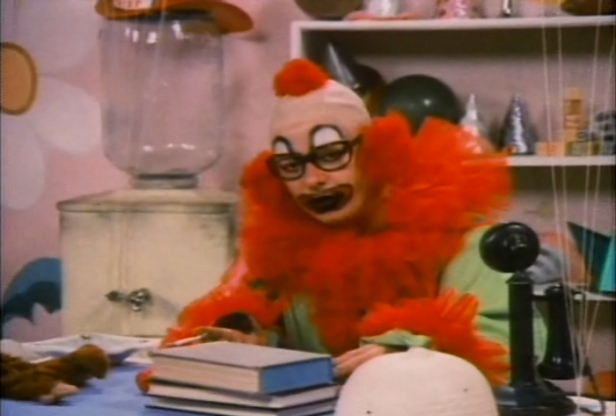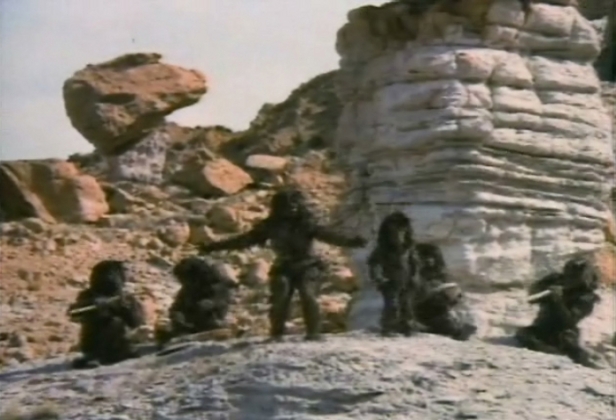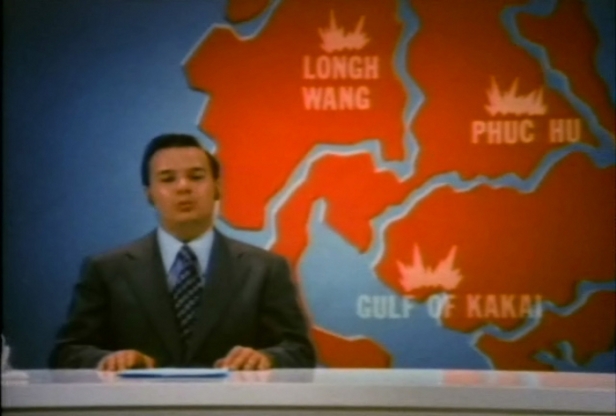The 1970s and 80s saw the release of a number of films that aped the sketch show format from television, among them Neal Israel and Bradley R. Swirnoff’s Tunnel Vision (1976), Ira Miller’s Loose Shoes (1980) (which featured Bill Murray, Susan Tyrrell, Ed Lauter and Sid Haig among others), the mysterious B.A.R.F. (1981) (which, according to the Temple of Schlock website, might be a re-release of the equally obscure 69 Minutes (1976) or Jim Bryan’s Boogievision (1977)), Joe Dante, Carl Gottlieb, Peter Horton, John Landis and Robert K. Weiss’ Amazon Women on the Moon (1987) and the best of the bunch by a very long way, John Landis’ The Kentucky Fried Movie (1977). Before all of them came this pioneering but not terribly good effort that stemmed from the earlier experimental theatrical work by its creator Ken Shapiro.
Shapiro and his collaborator Lane Sarasohn had founded the Channel One Theatre on East 4th Street in New York’s Greenwich Village where they staged a series of theatrical happenings revolving around pre-recorded satirical sketches shown simultaneously on three television sets. The best sketches were later compiled into a stage production that opened off-Broadway in October 1969 to great acclaim under the name The Groove Tube and Shapiro and Sarasohn soon hit on the idea of shipping compilation tapes to universities around the country. The show, a mix of political satire, pop culture references, vulgarity and counter-culture gags was a hit with young audiences and the film version went into production in 1972 and was released a year later.

There’s no plot, not even a proper framing device. The Groove Tube is just a collection of short skits and longer sketches (some too long) lampooning television news, advertisements, crime shows, public service announcements and children’s’ programming. There are plenty of fantasy elements along the way, including an opening spoof of 2001: A Space Odyssey (1968), in which a tribe of ape people discover a television set instead of a monolith, which then teaches them to groove to Curtis Mayfield’s magnificent Move on Up; a brief snatch of psychedelic animation representing a drug trip; talking testicles; a parody of sports programming that seems to owe more than a little to Nigel Kneale’s The Year of the Sex Olympics (1968); and a news report on the failure of a Soviet space mission that uses footage from the 1949 Republic serial King of the Rocket Men.
Sadly it’s all rather dull, the longer sketches dragging on far too long and the whole thing moving at a glacial pace that makes its 71 minutes feel an awful lot longer. It’s a film crying out for a more disciplined editor, though reducing the sketches to a length where they would have been at least amusing would have left us with a very short film indeed. It frequently tries far too hard for shock value and while its vulgarity sometimes yields results, it’s not as funny as it should be. Shapiros’ final song and dance routine, flamboyantly cavorting through the streets of New York to Just You, Just Me from the stage musical Marianne, written by Jesse Greer and Raymond Klages, raises a few smiles mainly because of the bemused reactions to the innocent passers-by he interacts with.

A lot of the pop culture references would have meant little to anyone outside the New York counter-culture scene of the day, whatever relevance they may have had now lost in the mists of time, somewhat blunting what little satire the film promised. What we’re left with is scatological puns (the running gag about the Uranus Corporation and its Brown-25 miracle substance), sophomoric double entendes (the names of the villages in the Vietnam war “news report”) and a plethora of not as daring as they think they are adult sketches (adult movie star Jennifer Welles turns up in one scene and the film was originally awarded an “X” certificate in the States, usually reserved for porn, though today the film would barely raise an eyebrow).
The Groove Tube‘s juvenile, sex-obsessed humour managed to connect with a youthful early 70s audience and the film a was a hit, one of the most successful independently produced comedies of its era. Today it still has a small cult following among younger fans who probably saw it an an age when they were really too young for it and it had a brief second life thanks to the rise of actor and comedian Chevy Chase who appears in two of the sketches – though subsequent re-releases and video versions tended to foreground his name for marquee value when his involvement is actually minimal.

The film opened the door for similar films but it took writers Jim Abrahams, David Zucker and Jerry Zucker – later writers of Airplane! (1980) and Top Secret! (1984) which were largely sketch films themselves, just ones with a more coherent overall story line – to take the format and do something genuinely funny with it. Like The Groove Tube, The Kentucky Fried Movie is a hit-and-miss affair but its ratio of the former to the latter is much better. The Groove Tube also influenced the then new and still-running now television satire show Saturday Night Live that debuted in 1975 and which also featured Chase as one of its ever-changing roster of “players” – The Groove Tube‘s Channel One news sketches, with their sign off of “Good night and have a pleasant tomorrow” was lifted word-for-word for Saturday Night Live for its Weekend Update skits which originally starred Chase as the anchorman.